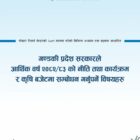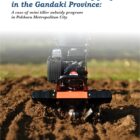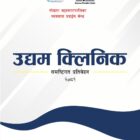In FY 2021/22, 13.09% of the total budget was allocated under the “Undivided” Abanda heading. This allocation was 11.14% in FY 2022/23, and 8.22% in FY 2023/24. While there is a declining trend in budget allocation under this heading, a significant amount continues to be allocated to this category.
| Fiscal Year | Total Budget (NPR in thousands) | Allocated Budget (NPR in thousands) | In percentage (%) |
| FY 21/22 | 30056700 | 3934726 | 13.09 |
| FY 22/23 | 35909000 | 4003405 | 11.14 |
| FY 23/24 | 33427200 | 2749721 | 8.22 |
(Source: budget speech)
The budget allocated under the ‘undivided’ category follows a unique mechanism where respective ministries allocate funds for unspecified activities. The Province Planning Commission (PPC), in coordination with the MoFA, estimates the budget. Ministries and their agencies plan and design annual programs based on PPC guidelines. This process includes setting targets, budgeting by unit costs, and conducting feasibility studies among other pre-planning processes. However, in some cases, ministries list lump sum amounts into vague programs without a detailed breakdown. This vaguely allocated budget, without specific activities outlined, is bureaucratically referred to as an ‘abanda’ budget.
The hypothetical scenario represented below explains the complexity of allocating such type of budget.
Figure 1: Hypothetical illustration of the process involved in undivided “abanda” budget allocation.
The allocation of large amounts under undivided headings is often influenced by several factors, including inadequate program planning, lack of research and data, and failure to identify priorities beforehand, which makes this a widely acknowledged budgetary practice. Nonetheless, in the Nepalese context, political interests frequently prevail. Such allocations are often used to advance political favors and support.
Large budgetary allocations in this category increase the risk of financial mismanagement. Most studies examining public finance management in federal Nepal underline the need to limit the distribution of such significant sums under such titles, arguing the mismanagement of funds.
After receiving guidelines and the framework from the PPC by Falgun 15, the Ministry of Finance has approximately four months to formulate, approve, and enact the budget. Ministry and governmental authorities justify that this limited timeframe makes detailed procedures challenging, thus making it practical and necessary to allocate the budget without specifying activities, particularly considering the provincial budget time constraints. This approach provides needed flexibility. However, recent practices have compromised the rational and flexible use of undivided budget allocations. Therefore, establishing standard procedures and setting thresholds for such undivided budget allocation could help address this fiscal malpractice.

An undergraduate Law student at Tribhuvan University. Passionate about legal issues and advocacy.



